I thought our driveway was narrow before. Then we got a new car. I had to rethink my mindset on how to see things -- literally.
It's amazing how preset our brains are to be content with things that just work. Or at least seem to just work. Seem.
When I wrote the first version of this article I was focused on reaction, planning, vision, all great things. Then we got a new car, it was bigger. Not super big, it still fits in our freakishly narrow driveway, mathematically at least -- I had it all worked out -- and every bit about adjusting my strategies for a new car worked out .... fine. It was fine.
No, it wasn't.
READ Part 1: What having a really narrow driveway taught me about business
While I was mathematically correct in all my pre-planning, I hadn't fully considered the exponentially smaller margin for error I now had. Whereas previously I could adjust a little here and there as the gradient in the pavement shifted, I was many times closer to adjusting right into a wall. The one only constant I still had were my two human eyes and vision in my head of the not-viewable parts of the car and driveway to work from.
Benchmarks that seemed perfectly reasonable, excellent even, may not be standing the test of time they way they did months or years ago.
It was becoming clear, though, that this vision, while really quite good (if I do say so myself), was not going to be accurate enough to keep my new car undamaged, and my sanity intact. I needed a new strategy that came in the form of the very thing our dealer (car) told me never to rely upon: to rely on the backup rear camera as a de facto video game meets dock your galactic spaceship tool.
So what does this have to do with business? I had found a perfectly reasonable and reliable baseline for performance. It served me well and, on the surface could never be replaced. It's backing up a car, for Pete's sake, you have to look where you're going! Taking a hard look at that baseline as replaceable took a forced shift in circumstances -- the sheer dimensions of the car forced my hand in acknowledging that my trusty, reliable baseline was only so good, but was never going to be any better. And was not going to be good enough for my new-car driveway life.
Sometimes we have to look at our own benchmarks, processes, and expectations with a long hard critical eye. Benchmarks that seemed perfectly reasonable, excellent even, may not be standing the test of time they way they did months or years ago. On top of that, the work and attention required to get even better may have been seen as unnecessary or crazy even at one time; but now its net benefit makes your original concept seem ... small and inadequate. This is a great thing!
The push to open our minds to look critically at our business and all its parts requires that we not only look at how to do things better. But how to even think about it in the first place.
Using my backup camera, its alignment visual tools along with not physically turning my body to look out one side of the rear windows became a new, learned, skill. I learned with slow, deliberate, repetition to trust screen visual cues for edge alignment -- to place the edge guides at the same exact point in the side walls. To trust the mid-point guide along the seam of the driveway slabs, but more specifically to align just a hint to the right of the mid-point seam to best align with the far end of the driveway which has (not shown in this picture) other perils.
Additionally I learned that the mid-point guide is not just useful to see if you're aligned at the middle, also to see your trajectory -- are you moving in parallel with your guideline or are you on an angle? If your angle gets too far out of line you could be in trouble.
I learned that once I gained the confidence in the camera's guides and tools, and through repetition, that my brain was "mapping over" its existing learning to the backup camera, I realized an amazing thing. This method not only allowed me to adapt, but it was so much better than I'd have ever thought. A larger car and narrower margin for error mattered less and less.
We can up our performance game by allowing -- or forcing -- ourselves to see things differently. Rather than pushing to increase performance by the same metric or methodology we've been using, is there another way of looking at the metrics themselves?
If your goal is to sell and ship more product, at some point your warehouse fulfillment team will be physically unable to repeat their tasks any faster. By simply increasing staff you're going to hit another wall (pun intended): physical space. By requiring your humans to do the same tasks repeatedly and acquiring more humans to add more tasks is ignoring the fact that your humans and physical space are, themselves, limitations.
Change your game by looking critically at your baseline measurement methods. Are you even measuring and looking to improve the right metric anymore?

















